This hidden gem of Arunachal Pradesh left Anand Mahindra speechless
Explore Dibang Valley in Arunachal Pradesh—India’s least populated district and Anand Mahindra’s latest travel muse. Discover its tribal culture, untouched wilderness, and surreal high-altitude beauty.
1/13
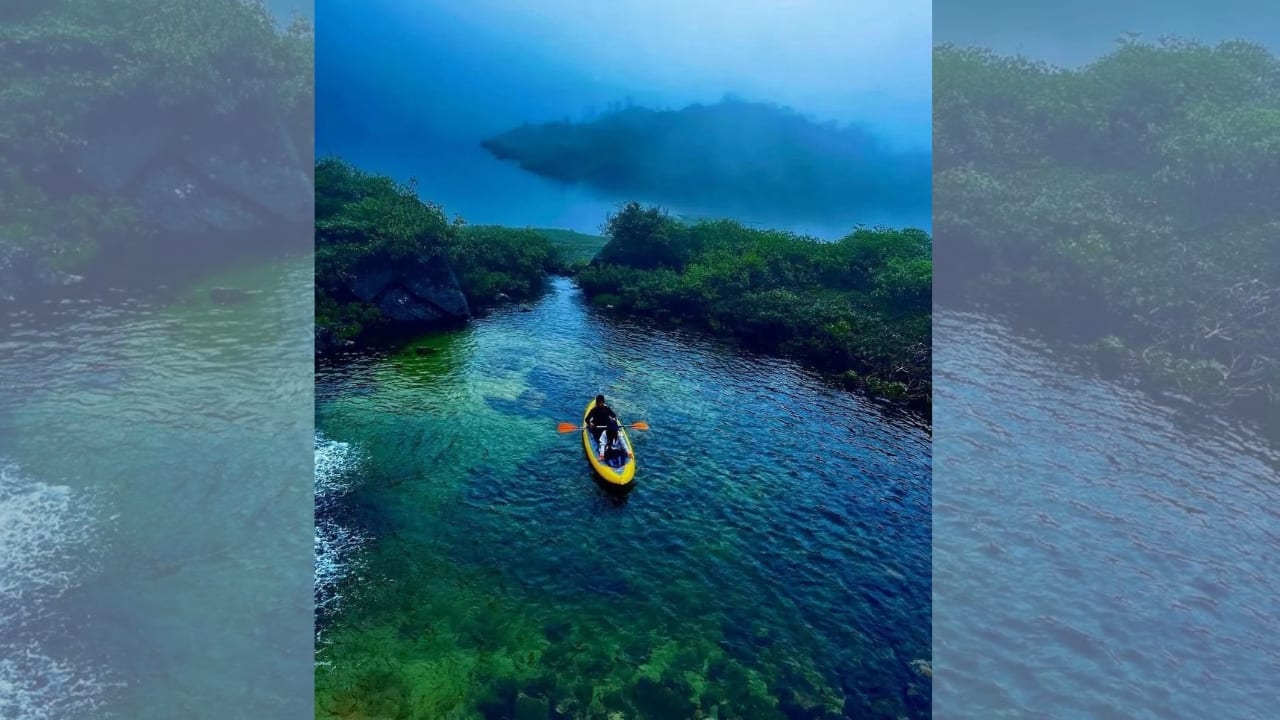
In a country whose landscapes stretch from coral-fringed coasts to snow-laden summits, it is no small feat to discover a place that feels truly uncharted. And yet, in the northeastern corner of India—where mist lingers on ancient hills and rivers course through near-silent gorges—Dibang Valley stands precisely as that: unseen, unspoiled, and strangely eternal. Recently, industrialist Anand Mahindra, no stranger to India’s many wonders, shared a photograph that halted the digital scroll. In it, two solitary kayakers drift beneath a waterfall so crystalline it scarcely seemed real. The caption was brief but telling: “Out of this world.” The post stirred curiosity, but for those familiar with Arunachal Pradesh, the scene was merely a glimpse of Dibang’s everyday enchantment. (Image: X/ @PemaKhanduBJP)
2/13

A Land Left to Itself
Dibang Valley occupies an immense stretch of terrain in the eastern Himalayas and yet holds the distinction of being India’s least populated district. Here, the human imprint is so faint that even the clouds seem to move more slowly, mindful not to disturb the quiet. Named after the Dibang River, which carves its path through the valley with a kind of quiet insistence, the region is a gallery of textures—pine-covered slopes, crumbling rock faces, bamboo groves lit by late afternoon sun, and, in the upper reaches, slopes occasionally visited by snowfall that does not announce itself but simply arrives. (Image: X/@BjymDibang)
Dibang Valley occupies an immense stretch of terrain in the eastern Himalayas and yet holds the distinction of being India’s least populated district. Here, the human imprint is so faint that even the clouds seem to move more slowly, mindful not to disturb the quiet. Named after the Dibang River, which carves its path through the valley with a kind of quiet insistence, the region is a gallery of textures—pine-covered slopes, crumbling rock faces, bamboo groves lit by late afternoon sun, and, in the upper reaches, slopes occasionally visited by snowfall that does not announce itself but simply arrives. (Image: X/@BjymDibang)
3/13
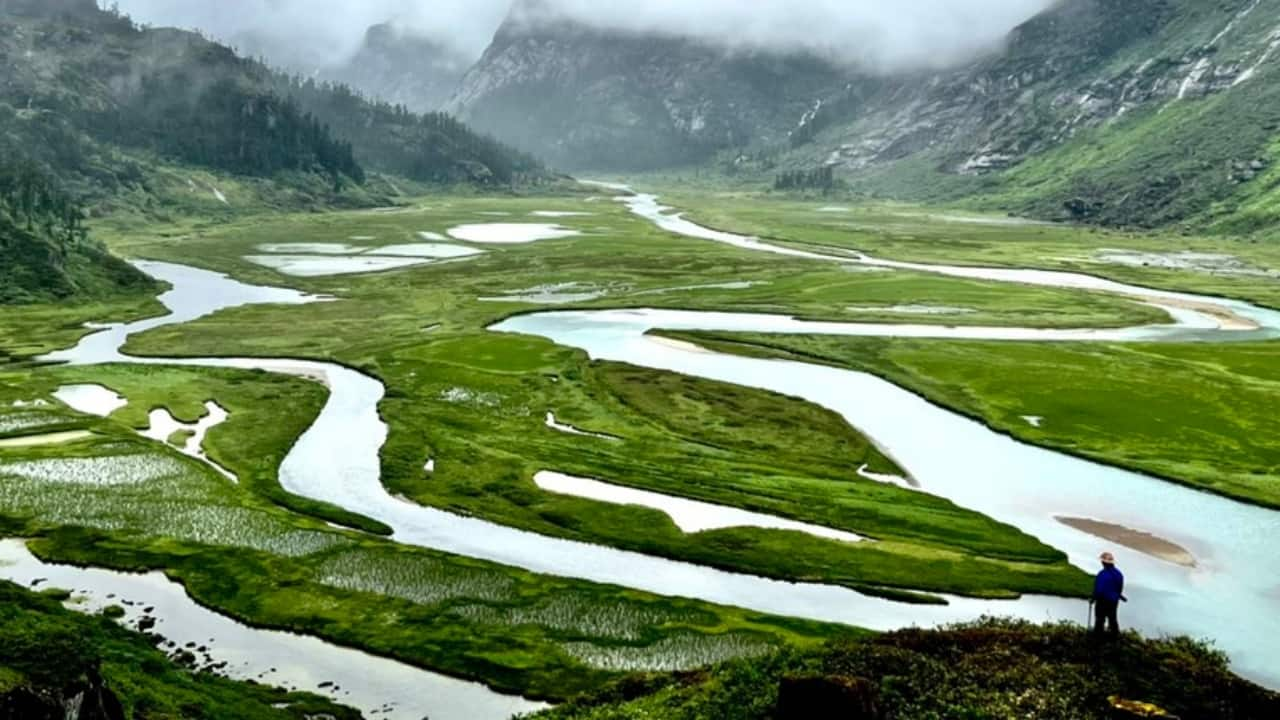
Culture Carved Into the Hills
What elevates Dibang beyond its geography is the presence of the Idu Mishmi people, one of India’s lesser-known tribes whose customs have withstood both time and modern encroachment. Their villages are not built for tourists but for continuity—for memory, for myth, and for the rhythms of a land where seasons still matter. If fortune (and planning) allow, travellers may find themselves among the spectators at the Reh Festival, held annually on February 1. It is a celebration of the spiritual bond between the people and the divine, marked by ceremonial chants, animal motifs, and garments dyed in shades not easily found in city markets. Equally striking is the Ke-Meh-Ha Festival in late September, when the Idu Mishmi gather to thank the natural world for its provisions. In both, the intent is not to perform, but to reaffirm—ritual as a form of remembering. (Image: X/@Thekotayu)
What elevates Dibang beyond its geography is the presence of the Idu Mishmi people, one of India’s lesser-known tribes whose customs have withstood both time and modern encroachment. Their villages are not built for tourists but for continuity—for memory, for myth, and for the rhythms of a land where seasons still matter. If fortune (and planning) allow, travellers may find themselves among the spectators at the Reh Festival, held annually on February 1. It is a celebration of the spiritual bond between the people and the divine, marked by ceremonial chants, animal motifs, and garments dyed in shades not easily found in city markets. Equally striking is the Ke-Meh-Ha Festival in late September, when the Idu Mishmi gather to thank the natural world for its provisions. In both, the intent is not to perform, but to reaffirm—ritual as a form of remembering. (Image: X/@Thekotayu)
4/13
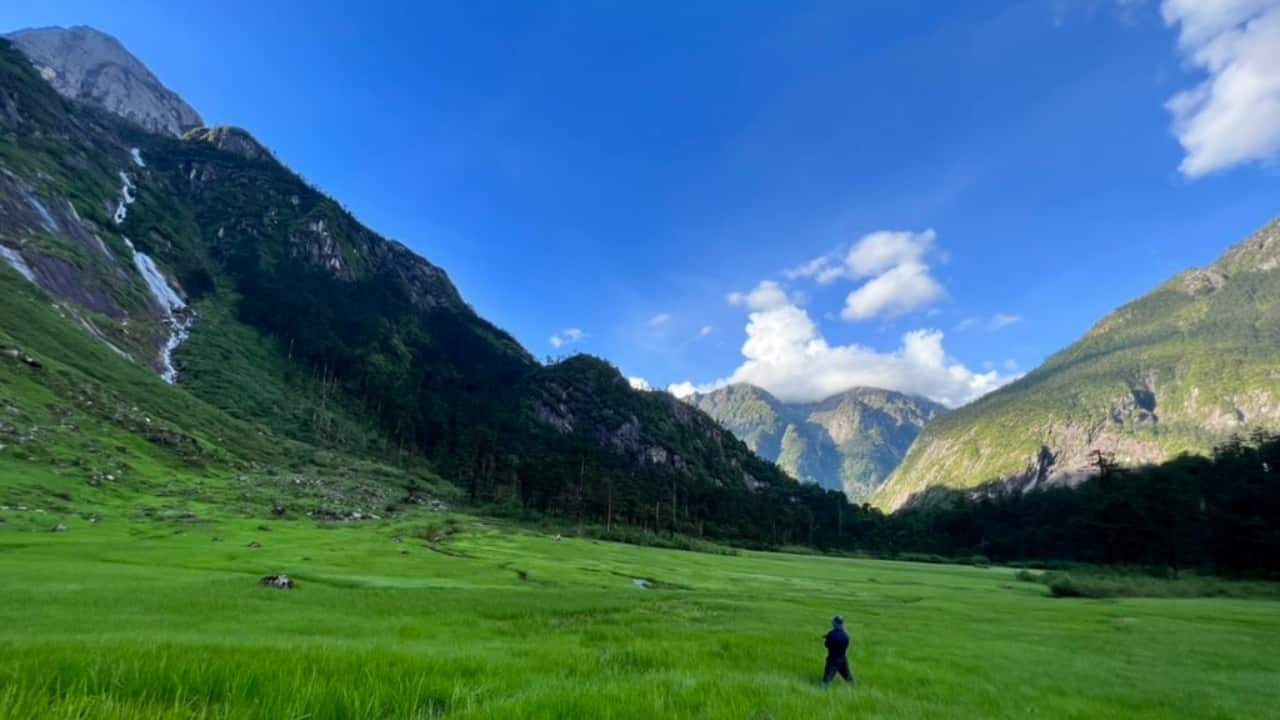
Places to Find—Not Just Visit—in Dibang Valley
Dibang Valley does not reveal itself in haste. It is a landscape that prefers to be discovered slowly, on foot, or through the quiet observations of those who know how to travel without disruption. While guidebooks may list a few locations, the true treasures of this region lie in the spaces between names—in forests where the trees whisper old languages and rivers that carve without pause. (Image: X/@Thekotayu)
Dibang Valley does not reveal itself in haste. It is a landscape that prefers to be discovered slowly, on foot, or through the quiet observations of those who know how to travel without disruption. While guidebooks may list a few locations, the true treasures of this region lie in the spaces between names—in forests where the trees whisper old languages and rivers that carve without pause. (Image: X/@Thekotayu)
5/13

1. Mehao Lake
Tucked within a forest of staggering biodiversity, Mehao Lake sits like a dropped mirror between the ridges. Its stillness is not mere absence of movement, but a presence in itself. Rare birds flit through the upper canopy, while orchids bloom in secret among the underbrush. The lake’s perimeter is unmanicured, its mood dependent on the sky above. (Image: X/ @PemaKhanduBJP)
Tucked within a forest of staggering biodiversity, Mehao Lake sits like a dropped mirror between the ridges. Its stillness is not mere absence of movement, but a presence in itself. Rare birds flit through the upper canopy, while orchids bloom in secret among the underbrush. The lake’s perimeter is unmanicured, its mood dependent on the sky above. (Image: X/ @PemaKhanduBJP)
6/13
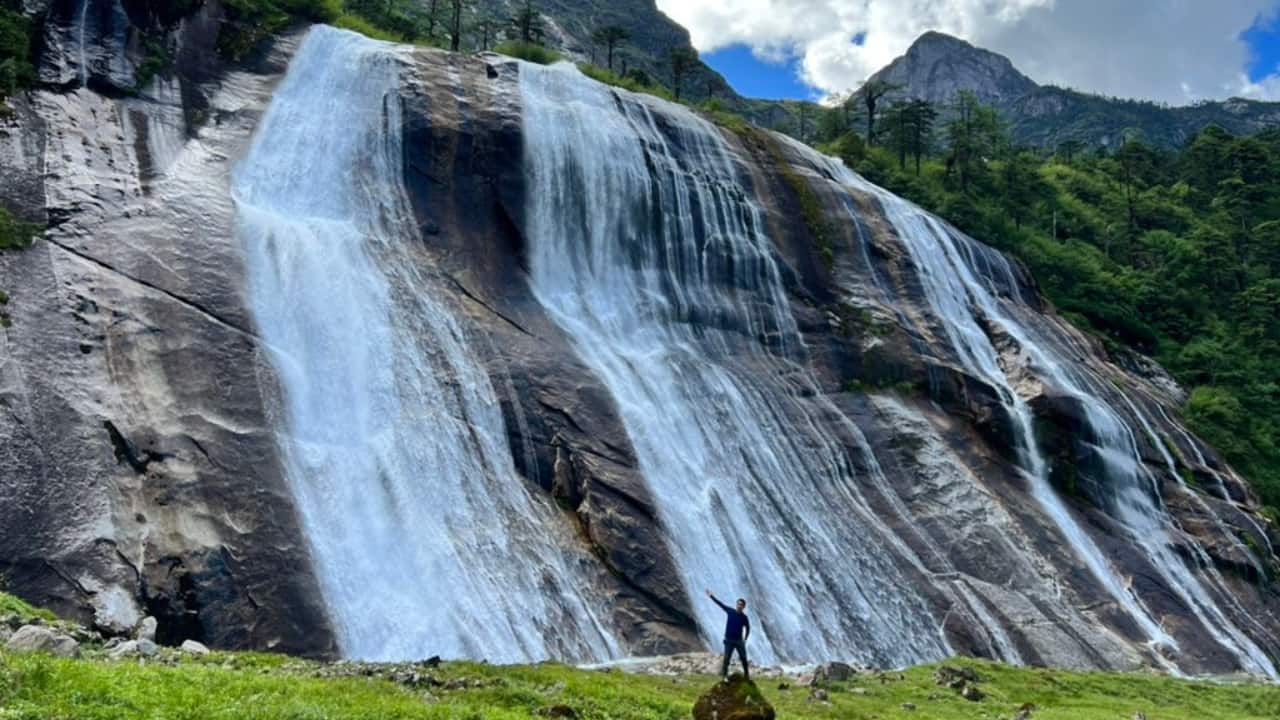
2. Mehao and Dibang Wildlife Sanctuaries
Both sanctuaries offer an ecological depth that remains largely undocumented. Home to species found nowhere else in India, including the Mishmi takin, the hoolock gibbon, and the Sclater’s monal, these protected zones are far more than reserves—they are time capsules. Trails here are not curated, and encounters with wildlife are shaped by chance and silence rather than convenience. (Image: X/@Thekotayu)
Both sanctuaries offer an ecological depth that remains largely undocumented. Home to species found nowhere else in India, including the Mishmi takin, the hoolock gibbon, and the Sclater’s monal, these protected zones are far more than reserves—they are time capsules. Trails here are not curated, and encounters with wildlife are shaped by chance and silence rather than convenience. (Image: X/@Thekotayu)
7/13

3. The Seven Lakes Trek
Among the most challenging and least-known trekking routes in India, the Seven Lakes Trek is an ascent through myth and altitude. The trail connects seven glacial lakes, each varying in hue and temperament—some are sapphire blue, others milky with meltwater. The route is rarely attempted without local guidance, and even less frequently completed. It remains, for now, a path known by whispers. (Image: X/ @PemaKhanduBJP)
Among the most challenging and least-known trekking routes in India, the Seven Lakes Trek is an ascent through myth and altitude. The trail connects seven glacial lakes, each varying in hue and temperament—some are sapphire blue, others milky with meltwater. The route is rarely attempted without local guidance, and even less frequently completed. It remains, for now, a path known by whispers. (Image: X/ @PemaKhanduBJP)
8/13
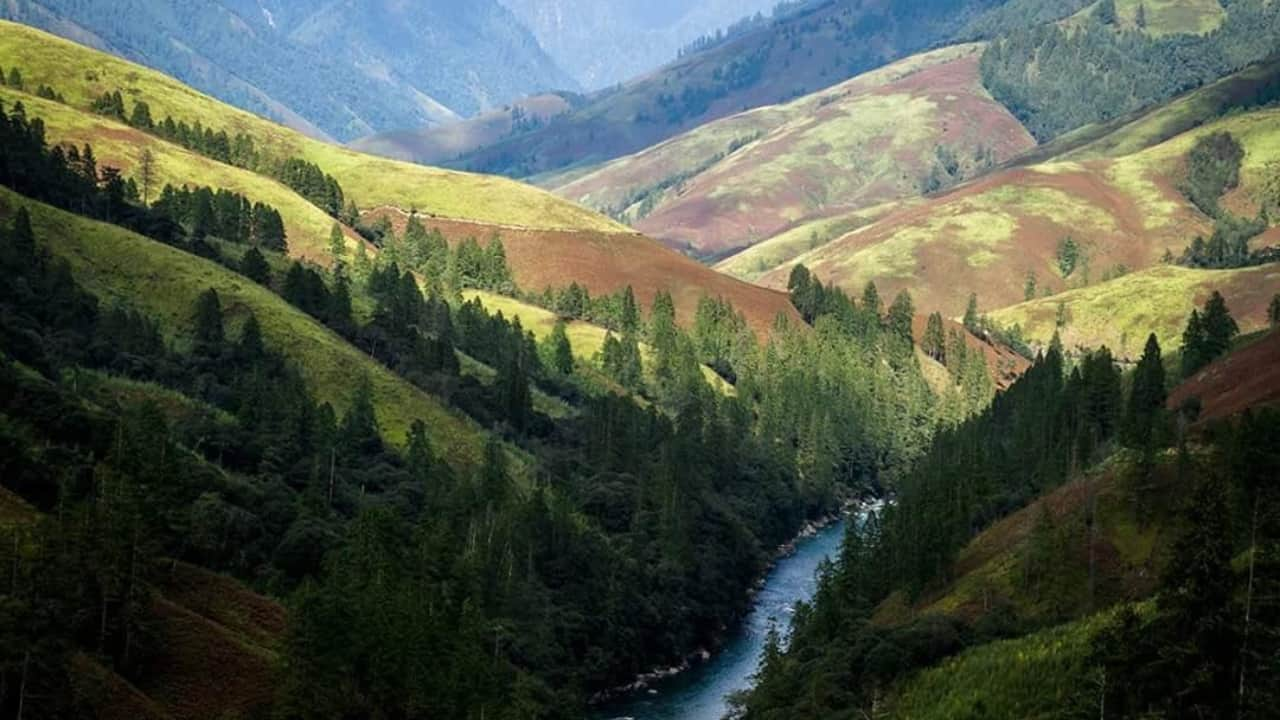
4. Mayodia Pass
A natural border between the known and the forgotten, Mayodia Pass rises into perpetual mist. Located at an altitude of over 2,600 metres, it is one of the few places in the Northeast where snowfall occurs annually, often without warning. The air is crisp even in May, and visibility often gives way to white silence. It is not so much a place to visit as it is a veil to cross. (Image: X/ @PemaKhanduBJP)
A natural border between the known and the forgotten, Mayodia Pass rises into perpetual mist. Located at an altitude of over 2,600 metres, it is one of the few places in the Northeast where snowfall occurs annually, often without warning. The air is crisp even in May, and visibility often gives way to white silence. It is not so much a place to visit as it is a veil to cross. (Image: X/ @PemaKhanduBJP)
9/13

5. Anini
Though it functions as the administrative centre of the valley, Anini feels more like a frontier outpost. Its collection of modest buildings and satellite dishes seem almost accidental in a setting dominated by dense forest and steep inclines. For travellers, Anini serves as a base—a beginning rather than a destination in itself. (Image: X/ @PemaKhanduBJP)
Though it functions as the administrative centre of the valley, Anini feels more like a frontier outpost. Its collection of modest buildings and satellite dishes seem almost accidental in a setting dominated by dense forest and steep inclines. For travellers, Anini serves as a base—a beginning rather than a destination in itself. (Image: X/ @PemaKhanduBJP)
10/13

6. Mipi
One of the remotest villages in the region, Mipi lies at the edge of human habitation. The landscape here is vast, the population sparse. It is a place where the river is louder than the road, and where dusk arrives early beneath the thick canopy. Trekkers begin their expeditions from Mipi not for the promise of comfort, but for the rare privilege of solitude. (Image: X/ @PemaKhanduBJP)
One of the remotest villages in the region, Mipi lies at the edge of human habitation. The landscape here is vast, the population sparse. It is a place where the river is louder than the road, and where dusk arrives early beneath the thick canopy. Trekkers begin their expeditions from Mipi not for the promise of comfort, but for the rare privilege of solitude. (Image: X/ @PemaKhanduBJP)
11/13

7. Jaru Valley
Perhaps the most ethereal of them all, Jaru Valley remains largely unmarked by development, its beauty shielded by inaccessibility. Reaching it requires a blend of determination, local insight, and a willingness to go without signal or signage. Those who venture in are greeted by unbroken vistas, ridgelines etched against an open sky, and alpine meadows that bloom briefly and brilliantly. The valley’s silence is not empty; it is alert, watching. Locals speak of it with quiet reverence—as a place not to conquer, but to approach. (Image: X/ @PemaKhanduBJP)
Perhaps the most ethereal of them all, Jaru Valley remains largely unmarked by development, its beauty shielded by inaccessibility. Reaching it requires a blend of determination, local insight, and a willingness to go without signal or signage. Those who venture in are greeted by unbroken vistas, ridgelines etched against an open sky, and alpine meadows that bloom briefly and brilliantly. The valley’s silence is not empty; it is alert, watching. Locals speak of it with quiet reverence—as a place not to conquer, but to approach. (Image: X/ @PemaKhanduBJP)
12/13

How to Reach Dibang Valley
Reaching Dibang Valley is not a matter of convenience but of intention. Its remoteness is part of its character, and the journey—whether by air, rail, or road—offers a shifting view of Northeast India’s unfolding landscapes.
By Air: The nearest airport is Dibrugarh (DIB) in Assam, connected to major cities. From there, travel by road to Roing, then continue through mountain passes to Anini, the district headquarters.
By Train: The closest station is New Tinsukia Junction (NTSK). From Tinsukia, hire a vehicle or take a bus to Roing, about 102 km away, then proceed onward to Anini.
By Road: Whether from Dibrugarh or Tinsukia, the journey to Dibang Valley is scenic and demanding. The road from Roing to Anini passes through Mayodia Pass and offers progressively wilder landscapes, requiring patience and care. Arrival here is a reward in itself. (Image: Wikipedia)
Reaching Dibang Valley is not a matter of convenience but of intention. Its remoteness is part of its character, and the journey—whether by air, rail, or road—offers a shifting view of Northeast India’s unfolding landscapes.
By Air: The nearest airport is Dibrugarh (DIB) in Assam, connected to major cities. From there, travel by road to Roing, then continue through mountain passes to Anini, the district headquarters.
By Train: The closest station is New Tinsukia Junction (NTSK). From Tinsukia, hire a vehicle or take a bus to Roing, about 102 km away, then proceed onward to Anini.
By Road: Whether from Dibrugarh or Tinsukia, the journey to Dibang Valley is scenic and demanding. The road from Roing to Anini passes through Mayodia Pass and offers progressively wilder landscapes, requiring patience and care. Arrival here is a reward in itself. (Image: Wikipedia)
13/13

Not a Destination, But a Discovery
Unlike destinations that are defined by attractions, Dibang Valley resists that kind of list-making. It is not a place for itineraries, nor is it shaped to satisfy brief visits. It offers no postcard icon, no single “thing to do.” Instead, it presents something much rarer—a sustained, uninterrupted encounter with a part of India that has remained mostly itself. When Anand Mahindra called it otherworldly, he wasn’t speaking metaphorically. Dibang Valley appears not just remote, but untouched by the compromises that often come with popularity. It is one of the last remaining sanctuaries for those who travel not to be entertained but to be changed. (Image: X/ @PemaKhanduBJP)
Unlike destinations that are defined by attractions, Dibang Valley resists that kind of list-making. It is not a place for itineraries, nor is it shaped to satisfy brief visits. It offers no postcard icon, no single “thing to do.” Instead, it presents something much rarer—a sustained, uninterrupted encounter with a part of India that has remained mostly itself. When Anand Mahindra called it otherworldly, he wasn’t speaking metaphorically. Dibang Valley appears not just remote, but untouched by the compromises that often come with popularity. It is one of the last remaining sanctuaries for those who travel not to be entertained but to be changed. (Image: X/ @PemaKhanduBJP)
Discover the latest Business News, Budget 2025 News, Sensex, and Nifty updates. Obtain Personal Finance insights, tax queries, and expert opinions on Moneycontrol or download the Moneycontrol App to stay updated!






